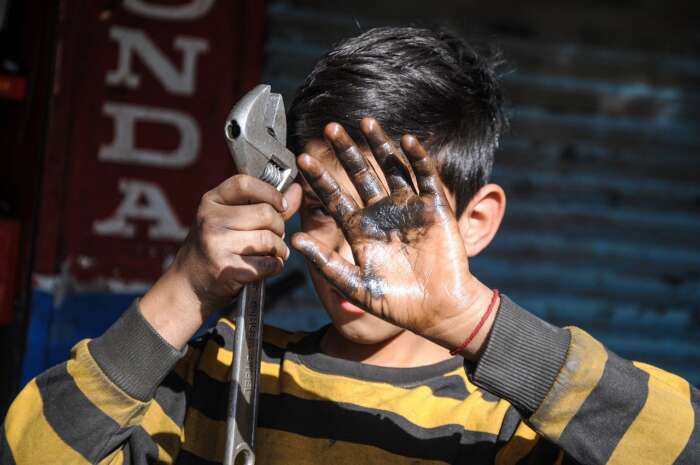In an age where corporate responsibility and transparency are more demanded than ever, the shadow of forced labor continues to loom large over the private sector. From the sweatshops of Southeast Asia to the farms of Southern Europe, modern slavery persists in various industries, exploiting vulnerable populations for profit.
The Textile Industry’s Hidden Workforce
In the bustling textile factories of Bangladesh and India, workers, often women and children, toil for up to 16 hours a day.
The promise of employment lures them into a cycle of unrelenting labor with wages that barely meet survival needs.
Reports from human rights organizations reveal instances where these workers are not allowed to leave the factory premises without permission, essentially trapping them in their jobs.
Uyghur Forced Labor
In Western China, Uyghur forced labor is extensively used in textile mills. The U.S. banned imports from this region under the Uyghur Forced Labor Prevention Act due to credible evidence of forced labor practices.
Despite this, products can still indirectly enter global markets through third countries, complicating the tracing and regulation of such goods.
Last month, Northeastern University magazine reported in Northeastern Global News steps university researchers have taken. In 2022, the EndUyghurForcedLabour website reported on data from from the Jewish World Watch Uyghur Forced Labor Database and the Reports page of the Coalition website.
Fast Fashion
The fast fashion industry is notorious for labor abuses, with brands often producing garments at incredibly low costs This is frequently achieved at the expense of fair wages and working conditions for workers.
This sector has faced numerous allegations of forced labor, especially in supply chains that involve rapid production to meet consumer demand for cheap, trendy clothing.
Last year, Carmen Blanco Grigelmo write about 10-year-old Nasreen Sheikh, who was held in Kathmandu making clothes – EL PAÍS English.
Agriculture: Europe’s Overlooked Crisis
Southern European countries like Italy and Spain have become notorious for their exploitation of migrant labor in agriculture.
Migrants from Africa and Eastern Europe work under harsh conditions, with excessive hours and little protection. In some cases, their travel documents are held by employers, preventing them from leaving or seeking help, a clear violation of their basic human rights.
Forced labor is also a critical issue in Central Asia, particularly Turkmenistan, where cotton production involves widespread and systematic forced labor.
Despite bans, Turkmen cotton often enters global markets through countries like Turkey and China, where it is processed and re-exported, making supply chain tracking and accountability challenging. Katherine Putz documented this in The Diplomat current affairs magazine.

Domestic Servitude in the Gulf
The Gulf States are frequently criticized for their treatment of domestic workers, who come from Asia and Africa hoping for a better life. Instead, many find themselves in conditions akin to servitude, with their passports confiscated and their movements severely restricted.
These workers report not only physical and verbal abuse but also a lack of any legal recourse due to the kafala (sponsorship) system, which ties their immigration status directly to their employer.
For a detailed exploration of domestic servitude in the Gulf, an illustrative story can be found in the Under-Told Stories Project. It covers the case of Francisca Awah, who was trafficked into domestic servitude.
Francisca’s story highlights the widespread issues of non-payment and forced work conditions that many domestic workers face in the region. Despite some reforms, such as in Kuwait where domestic workers now receive some protections like a mandatory day off, many continue to face harsh realities.
This article provides insight into the struggles and the ongoing efforts to provide legal and social protections for these workers.
Global Response and Corporate Accountability
International pressure and advocacy have led to some improvements, such as commitments from global brands to clean up their supply chains. However, the enforcement of these commitments often lacks rigor and transparency, leaving many workers in limbo.
Organizations like the International Labour Organization and Human Rights Watch continue to push for more substantial changes in legislation and corporate practices.
$150 Billion Battle
The battle against forced labor in the private sector is ongoing and complex. It is a $150 Billion industry. While there are signs of progress, the scale of exploitation calls for a concerted global effort to ensure the rights of the most vulnerable are not sidelined in the rush for economic gain.
Consumers, corporations, and governments must unite in this cause to foster a future where work is free from coercion and exploitation.
This is a snapshot of ongoing issues related to forced labor in the private sector, highlighting the need for continuous vigilance and action.
For more detailed recent incidents or specific data, check the latest reports from credible organizations such as the International Labour Organization, Human Rights Watch, or the Global Slavery Index for the most current insights.



